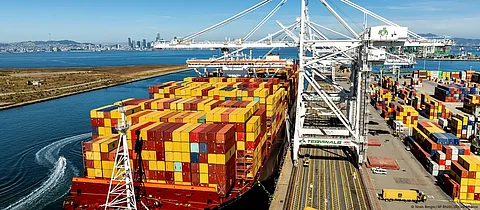

Donald Trump has granted another 90-day delay to planned sweeping tariffs on Chinese goods, signing an executive order just hours before the existing agreement between Washington and Beijing was due to lapse.
The order, signed on Monday, pushes the deadline for higher US tariffs on China to 10 November, US officials confirmed. In response, China’s commerce ministry said it would suspend planned retaliatory tariffs on American goods for the same period, maintaining existing duties at 10% and pledging to address some non-tariff barriers.
The move comes as the 90-day trade detente agreed in May was set to expire. Chinese officials urged the US to seek “positive outcomes” based on equality, respect and mutual benefit, referencing recent talks between the two heads of state.
Trump said that he took the action because Beijing had taken “significant steps” towards “remedying non-reciprocal trade arrangements and addressing the concerns of the United States relating to economic and national security matters”.
If the Tuesday deadline was not extended, US duties on Chinese imports would have climbed back to their levels in April, at the height of the tariff war between the world’s two largest trading nations.
The decision follows two weeks of speculation and mixed signals from Washington, after negotiators from China and the US concluded trade talks in Stockholm, Sweden, last month.
Just ahead of the tariff truce deadline, Trump urged China to quadruple its purchases of American soybeans – a major export to China.
“I hope China will quickly quadruple its soybean orders. This is also a way of substantially reducing China’s Trade Deficit with the USA. Rapid service will be provided. Thank you President XI,” Trump added.
China’s soybean imports from the US plunged by 27.8 per cent to US$2.08 billion in the second quarter as the US-China trade war intensified, from US$2.89 billion a year prior, according to Chinese customs data.
Both sides had signalled expectations of an extension following last month’s trade discussions in Stockholm. US treasury secretary Scott Bessent said last week there were “the makings” of a deal, expressing optimism about the path forward.
The stakes remain high. Trump has threatened tariffs on Chinese imports of up to 245%, with Beijing warning of retaliatory duties of as much as 125% — a clash that could escalate into a full-scale trade war. Currently, US exports to China face tariffs of around 30%, while Chinese imports are subject to a 10% baseline duty plus an additional 20% levy linked to US allegations over fentanyl smuggling.
The tariff reprieve was preceded by a separate deal in which US chipmakers Nvidia and AMD agreed to pay the US government 15% of their revenues from advanced semiconductor sales to China in exchange for export licences. Stephen Olson, a former US trade negotiator, described the arrangement as “the monetisation of US trade policy”, warning it marked “a new and dangerous” precedent.